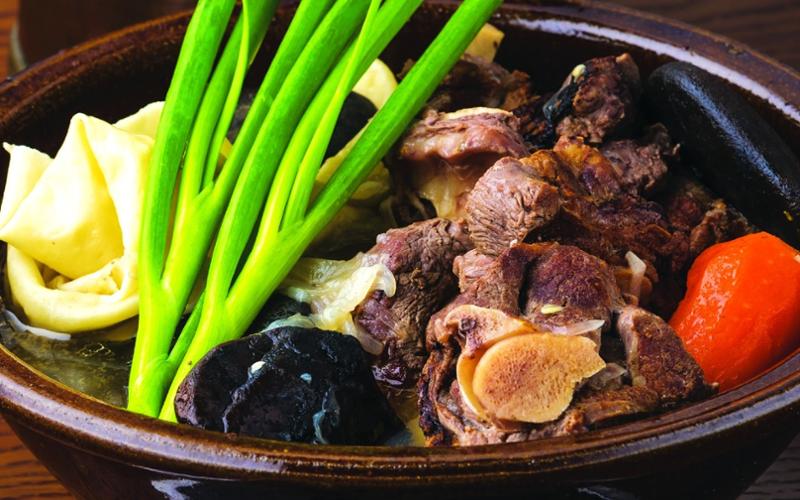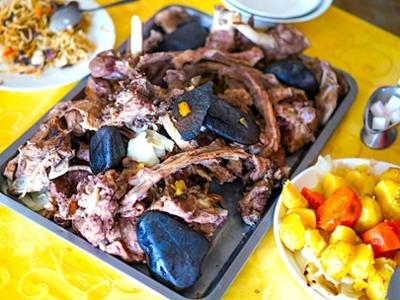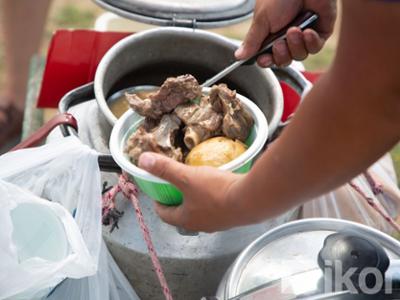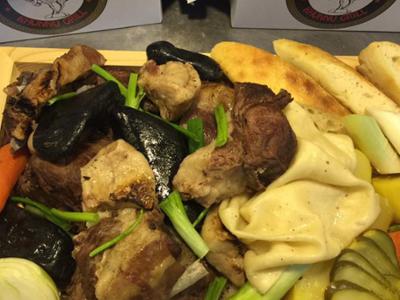



Khorkhog is one of Mongolia’s most beloved traditional dishes, often referred to as the “Mongolian barbecue.” This unique and flavorful meal is deeply rooted in nomadic hospitality and is commonly served during special gatherings, celebrations, or when guests are honored. Its preparation method, using hot stones and sealed containers, reflects the ingenuity of herders who adapted to life on the vast steppes without modern kitchens.
How Khorkhog is Prepared
Khorkhog is traditionally made with mutton or goat meat, which is cut into large chunks with the bone. The process involves heating smooth river stones over an open fire until red-hot. These stones are then layered with the meat, onions, carrots, potatoes, and sometimes garlic inside a metal container—usually a large milk can. The container is sealed tightly to trap steam and flavor, allowing the meat to cook with its own juices and the radiant heat from the stones. The result is tender, smoky, and juicy meat with a distinctive aroma.
What Makes It Unique
- Hot stones: Heated stones are placed both beneath and among the meat, acting as the main source of heat.
- Steaming and roasting: The method combines steaming and slow roasting inside a sealed pot.
- Interactive experience: Diners often rub the hot stones in their hands before eating—it’s believed to promote health and energy.
- Natural flavors: No artificial spices—just salt, fresh ingredients, and the essence of fire-cooked meat.
When and Where It’s Served
Khorkhog is usually enjoyed during countryside excursions, summer family gatherings, and on national holidays like Naadam. It’s commonly prepared outdoors by herders, but some restaurants in Mongolia also offer it on request, especially for tourists seeking an authentic experience.
Travel Tip
If you're traveling with a local guide or staying at a ger camp, ask in advance if a Khorkhog meal can be arranged—it’s often the highlight of many visitors’ culinary journey in Mongolia.
Fun Fact
The stones used in Khorkhog are often passed around before the meal so guests can hold them. This ritual is believed to bring good health and is a symbol of sharing warmth and respect.

